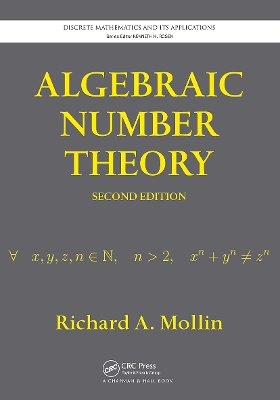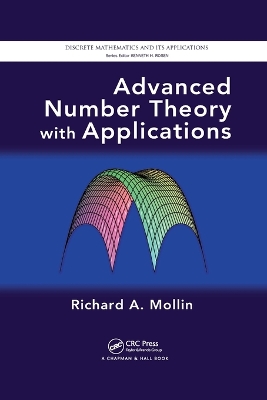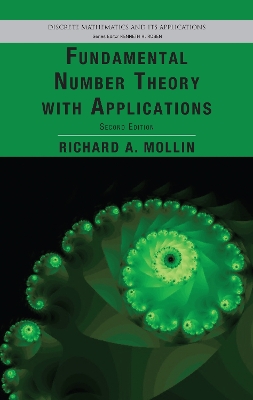Discrete Mathematics and Its Applications
1 primary work • 5 total works
Book 2
The first thing you will find out about this book is that it is fun to read. It is meant for the browser, as well as for the student and for the specialist wanting to know about the area. The footnotes give an historical background to the text, in addition to providing deeper applications of the concept that is being cited. This allows the browser to look more deeply into the history or to pursue a given sideline. Those who are only marginally interested in the area will be able to read the text, pick up information easily, and be entertained at the same time by the historical and philosophical digressions. It is rich in structure and motivation in its concentration upon quadratic orders.
This is not a book that is primarily about tables, although there are 80 pages of appendices that contain extensive tabular material (class numbers of real and complex quadratic fields up to 104; class group structures; fundamental units of real quadratic fields; and more!). This book is primarily a reference book and graduate student text with more than 200 exercises and a great deal of hints!
The motivation for the text is best given by a quote from the Preface of Quadratics: "There can be no stronger motivation in mathematical inquiry than the search for truth and beauty. It is this author's long-standing conviction that number theory has the best of both of these worlds. In particular, algebraic and computational number theory have reached a stage where the current state of affairs richly deserves a proper elucidation. It is this author's goal to attempt to shine the best possible light on the subject."
Exploring one of the most dynamic areas of mathematics, Advanced Number Theory with Applications covers a wide range of algebraic, analytic, combinatorial, cryptographic, and geometric aspects of number theory. Written by a recognized leader in algebra and number theory, the book includes a page reference for every citing in the bibliography and more than 1,500 entries in the index so that students can easily cross-reference and find the appropriate data.
With numerous examples throughout, the text begins with coverage of algebraic number theory, binary quadratic forms, Diophantine approximation, arithmetic functions, p-adic analysis, Dirichlet characters, density, and primes in arithmetic progression. It then applies these tools to Diophantine equations, before developing elliptic curves and modular forms. The text also presents an overview of Fermat's Last Theorem (FLT) and numerous consequences of the ABC conjecture, including Thue-Siegel-Roth theorem, Hall's conjecture, the Erdoes-Mollin--Walsh conjecture, and the Granville-Langevin Conjecture. In the appendix, the author reviews sieve methods, such as Eratothesenes', Selberg's, Linnik's, and Bombieri's sieves. He also discusses recent results on gaps between primes and the use of sieves in factoring.
By focusing on salient techniques in number theory, this textbook provides the most up-to-date and comprehensive material for a second course in this field. It prepares students for future study at the graduate level.
An update of the most accessible introductory number theory text available, Fundamental Number Theory with Applications, Second Edition presents a mathematically rigorous yet easy-to-follow treatment of the fundamentals and applications of the subject. The substantial amount of reorganizing makes this edition clearer and more elementary in i
Heretofore, there has been no suitable introductory book that provides a solid mathematical treatment of cryptography for students with little or no background in number theory. By presenting the necessary mathematics as needed, An Introduction to Cryptography superbly fills that void. Although it is intended for the undergraduate student needing an introduction to the subject of cryptography, it contains enough optional, advanced material to challenge even the most informed reader, and provides the basis for a second course on the subject.
Beginning with an overview of the history of cryptography, the material covers the basics of computer arithmetic and explores complexity issues. The author then presents three comprehensive chapters on symmetric-key cryptosystems, public-key cryptosystems, and primality testing. There is an optional chapter on four factoring methods: Pollard's p-1 method, the continued fraction algorithm, the quadratic sieve, and the number field sieve. Another optional chapter contains detailed development of elliptic curve cryptosystems, zero-knowledge, and quantum cryptography. He illustrates all methods with worked examples and includes a full, but uncluttered description of the numerous cryptographic applications.
SUSTAINS INTEREST WITH ENGAGING MATERIAL
Throughout the book, the author gives a human face to cryptography by including more than 50 biographies of the individuals who helped develop cryptographic concepts. He includes a number of illustrative and motivating examples, as well as optional topics that go beyond the basics presented in the core data. With an extensive index and a list of symbols for easy reference, An Introduction to Cryptography is the essential fundamental text on cryptography.




